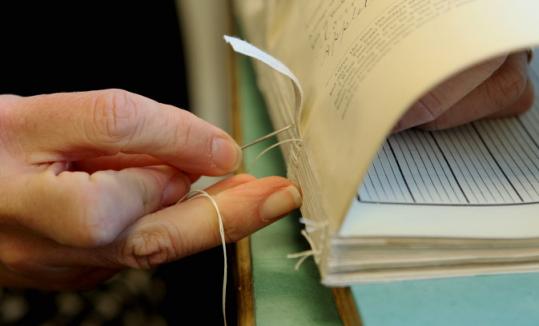News release from allied organization, Heritage Preservation:
WASHINGTON DC – Heritage Preservation announces the publication of Implementing the Incident Command System at the Institutional Level: A Handbook for Libraries, Archives, Museums, and Other Cultural Repositories. The book is written by David Carmicheal, Director of the Georgia Division of Archives and History, and published in cooperation with RescuingRecords.com.

When rainwater flooded the Alaska State Archives in 2009, conservator Ellen Carrlee began blogging about the trials and triumphs of rescuing a priceless cultural collection. Ellen’s daily journal struck a chord with author David Carmicheal. “This institution was isolated, trying to address a disaster internally, without the resources that FEMA and other agencies bring to the table when a disaster is widespread.” He recognized that the Incident Command System (ICS) could provide a powerful tool within a single institution.
Implementing the Incident Command System at the Institutional Level explains how libraries, archives, and museums can adopt the ICS as a temporary management structure whenever “business as usual” won’t get the job done. The manual, written in a clear and conversational style, describes staff roles and includes charts, duty statements, sample forms, and a step-by-step incident description. Whether preparing for fires and floods – or even planning a major public event – the Incident Command System is a proven management tool that safeguards lives, property, and collections.
Since its development in the early 1970s, ICS has been used to tackle a vast array of incidents, including fires, floods, hurricanes, and earthquakes. “The system has demonstrated that it can scale up to handle disasters that mushroom over large areas and even multiple states,” says Carmicheal, “but the ICS was designed to scale down as well as up.”
Jane Long, Vice President for Emergency Programs at Heritage Preservation, believes the Incident Command System has particular value for libraries, archives, and museums. “Even small disasters can have big consequences for cultural institutions. ICS provides a structured and effective response and ensures that every responder involved is on the same page.”
The 208-page book is available in two formats: Perfect Bound ($47.00) or Coil Bound ($47.00), plus postage and handling. For further information, visit www.RescuingRecords.com/ics.html. RescuingRecords.com is a website dedicated to protecting essential records during times of crisis.



